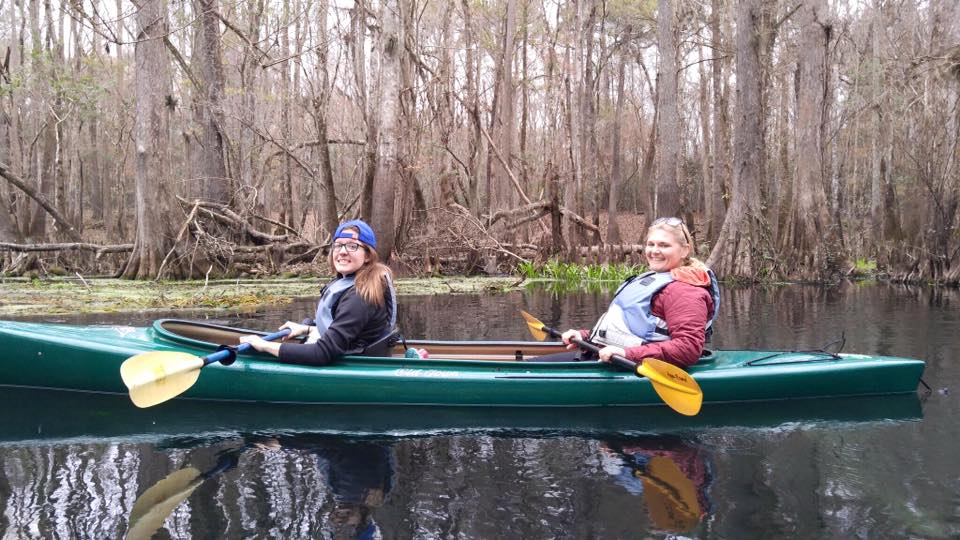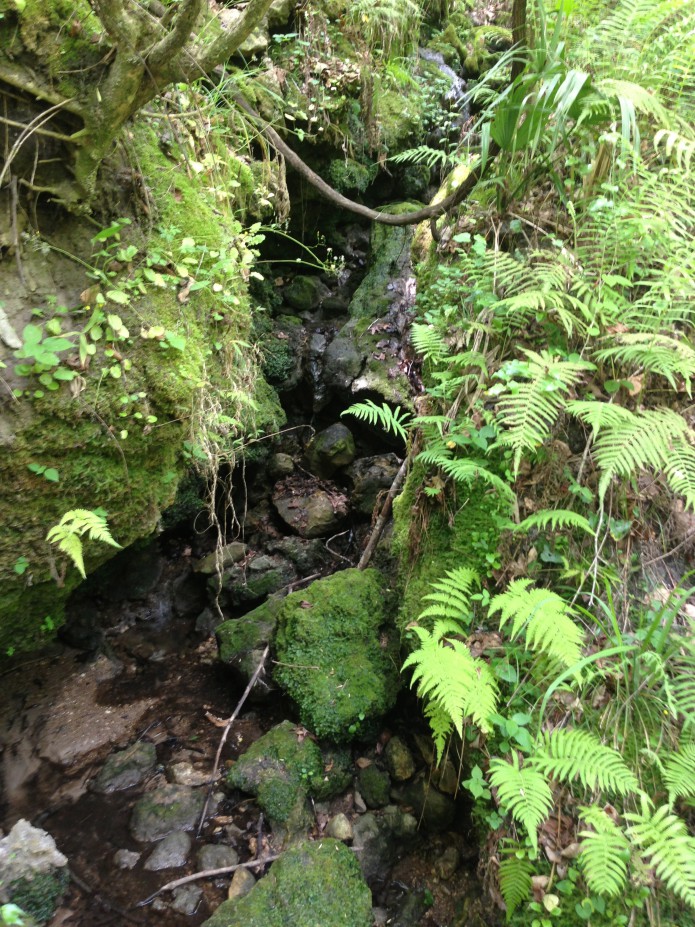
Photo by Jennifer Adler. UF graduate students Meghan Mangrum, left, and Hannah O. Brown paddle North Florida’s Ichetucknee River on a field trip for Environmental Journalism class.
By Meghan Mangrum
Water – it gives life and it takes it. Rushing rivers, riptides and hurricane rains seem like such a different beast than the 24 ounces of tap water in my blue Contigo water bottle. Despite a childhood in Central Florida, consisting of summers spent splashing in Grandma’s backyard pool, I have maintained a fear of water for most of my life.
“I should have taken a Xanax,” I joked, but not really, before we launched on our journey down the Ichetucknee River. A non-mandatory field trip for my Environmental Journalism class at the University of Florida, I decided this was just the way to tackle my fear. At least I trusted that our instructor did not want to make the news for a grad student drowning on a peaceful class outing.
Our guide (and the life vest that I zipped and buckled tightly around myself) helped quiet my fears enough to grab a paddle and prepare to climb into the tandem kayak I would share with a classmate. Yet, stepping into the kayak, inches above the dark water and drifting away from the dock, brought my anxiety levels as high as the cypress trees that reached above us.
My first mate, Hannah, had the perfect amount of patience and a calming voice that assured me I wouldn’t drown. We agreed early on that the goal was to stay out of the water (which we mostly did, except the few times I accidentally splashed myself and others nearby with my paddle).
Since it was late January, the river was mystical. The naked, barren trees reached toward a gray sky and looked almost bleak. Yet it was obvious that life shined here – not so much from our colorful boats as we flowed through the water – but in the gloriously green sea grass beneath our boats, and the grasses and plants that shone bright, juxtaposed against the gray along the shore.
In many spots, the river bottom was close – close enough to marvel at the different colors of the clear water and to softly brush the sea grass with your paddle. We spent much of the trip at the front of the pack, to prevent playing bumper boats with our classmates, but also to enjoy the river in silence. The splash of our paddles as we steered around branches and over fallen trees was like a lullaby.
I didn’t feel compelled to sing “Just Around the Riverbend,” but something magnetic encouraged me to continue propelling forward. Maybe it was the first manatee we encountered and the hope to see more, or the blue heron we watched dive close to the water’s surface. But I think it was my reverence of the river itself that allowed a lifetime of anxiety to ease, now replaced by awe.
What the first peoples who discovered the rivers and springs of Florida must have thought when they first caught sight of them – what a beautiful life-giving resource they had found, what a blessing.
Water has the power to tear down homes and carve its way through limestone and land, ever flowing. Yet, water is what gives us life – isn’t that why some indigenous people dance for rain or why the ancient Egyptians based their religion around the Nile’s floods?
I experienced something beautiful that day. I paddled the Ichetucknee with wonderful new friends and supporters by my side. For many of them, our short trip was one of dozens they have taken in their lives. But for me, the trip ended with a terrific sense of accomplishment and awe. I don’t know when I’ll kayak again, but I’m sure I will. For now, I am grateful for the experience — and for the river, for letting me be a part of it.
